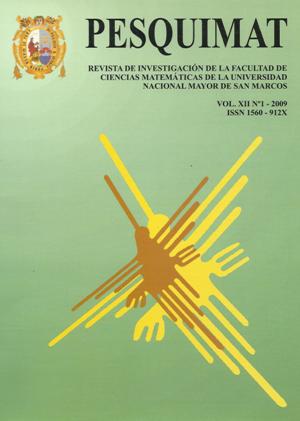LOCALIZATION IN NETS AND PETRI NET SIMULATIONS APPLICATED TO THE ATTENTION OF AFFECTED PEOPLE BY THE NATURAL DISASTERS
DOI:
https://doi.org/10.15381/pes.v12i1.9489Keywords:
Location, Petri nets, Simulation.Abstract
The research objective is to minimize the time to care for the population affected by natural disaster. It is suggested that the affected population go to safe places of refuge and care of basic needs, established by the civil defense headquarters, whose knowledge must be disseminated throughout the population permanently, The study consists of two fases, in the first stage determines the location of sites of care by using networks of nodes such that nodes of a network represent areas where the population resides. It uses the model of the p-medium and the test of time home care to the residents who come to the center of attention, associated with the shortest distance to reach the point of care. After having located the sites of care, focuses the problem of efficient and timely care to the people that need it, for which we construct a Petri net for each focus. This network represents the whole process of attention and all its alternatives: registration of persons, medical care, shelter, among other services.
The resulting Petri net is simulated to determine the maximum and average length of queues, average wait time, average time spent per person in the process and make changes in the parameters to determine their most apropriate value to provide the best care possible. Also make changes in parameters such as average rate of increase in attention or care posts at each point of care and determining the optimal number of these sites to minimize the time to care for the affected population who go to a specific shelter. This is a study underway with final results depend on the availability of data and information relating to the present case related to an earthquake of high intensity.
Downloads
Published
Issue
Section
License
Copyright (c) 2009 Esther Berger Vidal, Inés Gambini López, Jaime Alcalde Chigne

This work is licensed under a Creative Commons Attribution-NonCommercial-ShareAlike 4.0 International License.
THE AUTHORS RETAIN THEIR RIGHTS:
a) The authors retain their trademark and patent rights, and also on any process or procedure described in the article.
b) The authors retain the right to share, copy, distribute, execute and publicly communicate the article published in Pesquimat magazine (for example, place it in an institutional repository or publish it in a book), with recognition of its initial publication in the Pesquimat magazine.
c) The authors retain the right to make a later publication of their work, to use the article or any part of it (for example: a compilation of their works, notes for conferences, thesis, or for a book), provided that they indicate the source of publication (authors of the work, magazine, volume, number and date).






